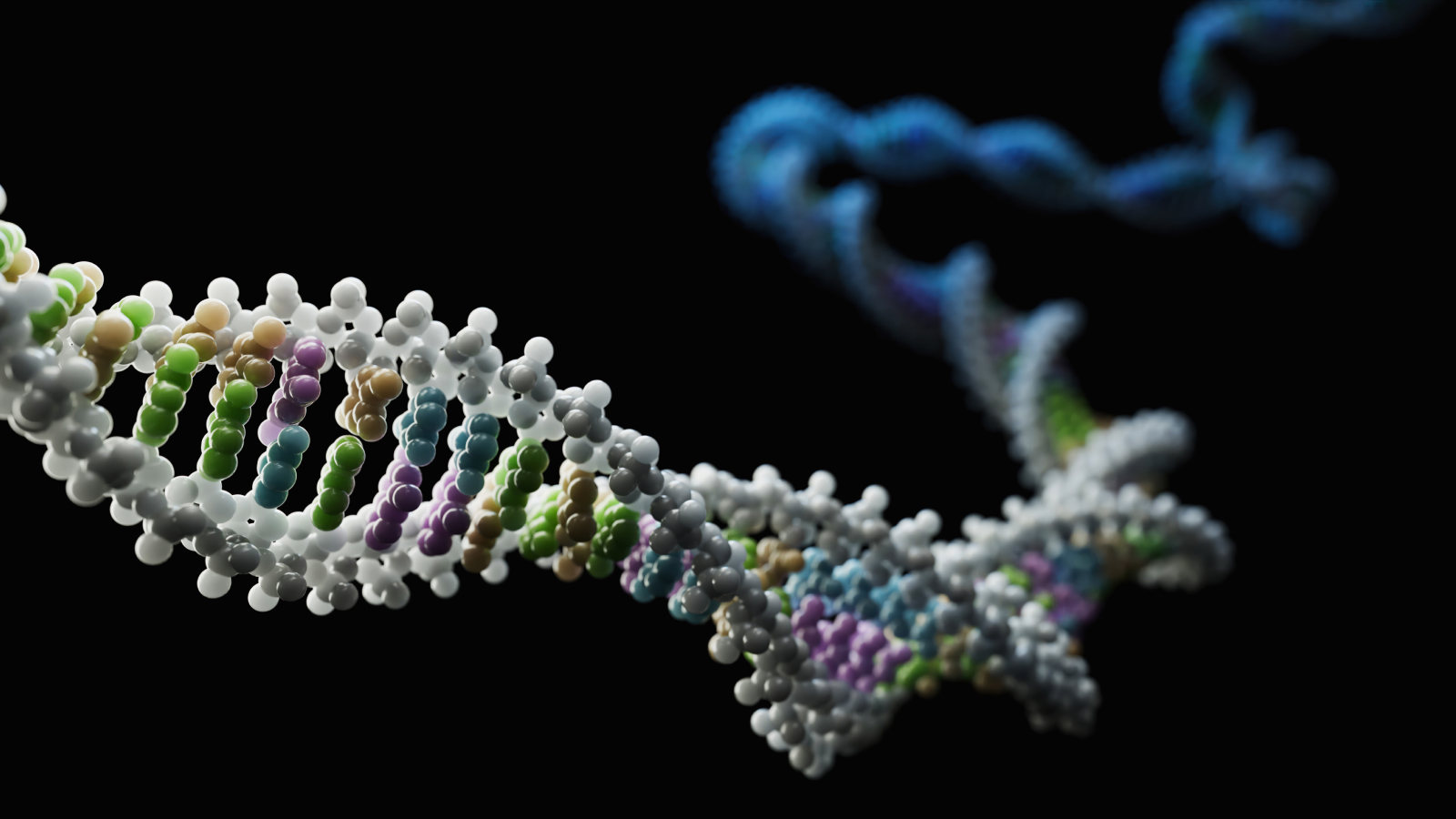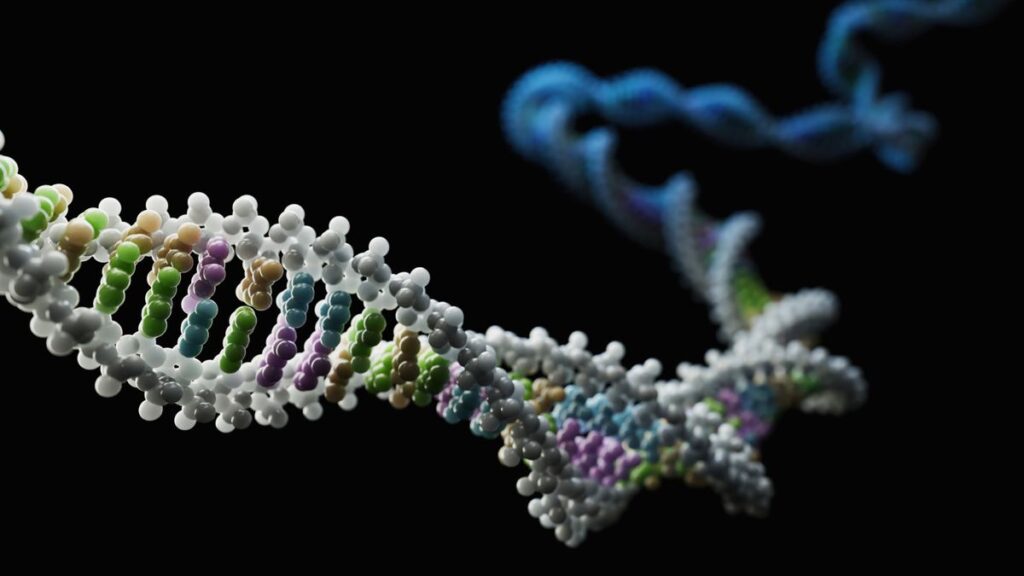
Scientists have uncovered a new way that cells control their genes — and it may rewrite our understanding of “epigenetics.”
Epigenetics is a form of DNA modification that doesn’t affect the DNA sequence itself. Instead, it describes when chemical groups attach to specific genes, thus switching those genes on or off, or else changing the 3D shape of chromosomes.
Now, in a study published Jan. 17 in the journal Cell, scientists have uncovered a whole new method of gene regulation that involves epigenetic tweaks made to both DNA and its molecular cousin RNA, at the same time.
Looking forward, the researchers want to unpack how this new type of gene control relates to cancer.
“It is truly exciting to uncover such a new mechanism, further expanding our understanding of gene regulation,” Kathrin Plath, director of epigenomics, RNA and gene regulation at UCLA who was not involved in the study, told Live Science in an email.
Related: Sperm cells carry traces of childhood stress, epigenetic study finds
A new layer of gene regulation
One common type of epigenetic modification is methylation, which describes the addition of a molecule called a methyl group to DNA or histones — proteins that DNA wraps around to become more compact and fit into the nucleus. A protein called DNMT1 adds these molecules to DNA, and its activity can turn gene expression up or down depending on where a given gene is methylated.
In recent years, researchers have also found that RNA — a molecule that shuttles instructions from DNA out into the cell to make proteins — can also be modified. This is mainly done by a protein complex called METTL3-METTL14. This methylation can destabilize the RNA molecule, reducing the amount of protein made.
Every cell in the body uses both RNA and DNA methylation to regulate gene expression. However, it was previously assumed that these processes operated independently. The new study puts that assumption into question.
In the study, the scientists looked at mouse embryonic stem cells and mapped the locations of DNA and RNA methylation as the cells developed. They found that thousands of genes and their complementary RNA molecules contained both methylation markers.
Through additional experiments, the team found that the METTL3-METTL14 complex that interacts with RNA also recruits and physically binds to DNMT1, the protein that tags DNA. This new, bigger complex can then methylate the same gene at the DNA or RNA level. This enables the cell to further fine-tune its gene regulation during cell differentiation — a process by which a stem cell assumes a specific identity, becoming a heart or lung cell, for example.
Previous studies have shown clear connections between DNA and histone modifications, as well as between histone and RNA modifications.
“So why would a cell not also connect an epigenetic modification of DNA and an epigenetic modification of RNA?” said study co-author François Fuks, director of the ULB Cancer Research Center in Belgium. “[Our study shows] the direct connection between DNA methylation and RNA modification that has not been seen before,” he told Live Science.
According to Fuks, this study does have some limitations, namely, that it mostly focuses on embryonic stem cell differentiation. DNA and RNA modifications had separately been well characterized in stem cells in past studies, so it made sense for the researchers to start with them. But these same types of DNA and RNA modifications are present in all types of cells.
“Seeing this, it’s very unlikely that [this mechanism] will be just in ES cells,” Fuks said.
This discovery challenges the established view that these RNA- and DNA-modifying processes are completely separate, and it suggests that it may have broader implications in human biology and disease. To that end, Fuks and his team are trying to determine how this new mechanism relates to cancer.
If the coordination of DNA and RNA epigenetics gets thrown off, you may end up with too much or too little of a protein, Fuk suggested. “Now, a key protein will be expressed at a too high level,” he said.”This could be detrimental for a cell and contribute to tumorigenesis,” or the formation of tumors.
There are already approved therapies that inhibit the methylation of DNA, and there’s an early-phase clinical trial testing RNA methylation inhibition as a cancer treatment. Fuks and his team are testing the potential of combining these existing therapies to improve patients’ outcomes. Preliminary data from their laboratory studies hint this strategy could be useful for patients with leukemia.
At least in petri dishes, “we can revert the cancer progression of leukemic cells by adding these two drugs together,” Fuk said. “Eventually, down the line, why couldn’t we combine these two drugs to treat patients?”
